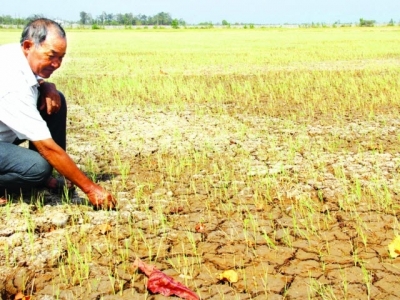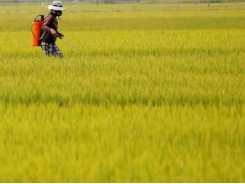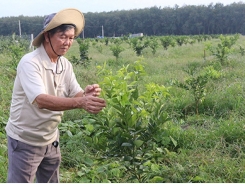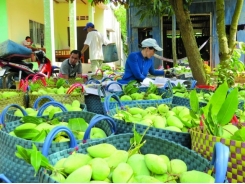Protecting farmers from climate affect a priority: UN

According to a new report from the Food and Agriculture Organization of the United Nations (FAO), between 2005 and 2015 natural disasters cost the agricultural sectors of developing economies US$96 billion in damaged or lost crop and livestock production. The report was presented at a conference held in Hanoi on March 15 and 16 to promote implementation of the Sendai Framework for Disaster Risk Reduction in the agricultural sectors of Asia and the Pacific.
Climate change impact
Half that damage – US$48 billion – occurred in Asia, says the report.
Some 83 percent of all drought-related economic losses accounted for US$29 billion, according to the report, entitled “The impacts of disaster and crisis on agriculture and food security 2017”. Its authors warned that their findings did not encompass the full picture of damage to agriculture, as little is known about loss to fisheries, aquaculture and forestry.
According to the FAO, while climate change and extreme weather events are affecting the environment in many ways, agriculture and food production in Asia and the Pacific are among those hardest hit and must be first in line to defend. Therefore, this organization is working with member nations, their farmers, academia, civil society and the private sectors to improve adaptation to climate change and mitigate its effects on the agriculture sector.
Mofazzal Hossain Chowdhury Maya, Bangladeshi Minister of Disaster Management and Relief, said agriculture is highly vulnerable to disasters due to heavy dependence on climate, natural resources and global trade, and climate change intensifies these risks. “But the risks are also driven by poorly planned development that results in pressures on land and water resources, ecosystem degradation, migration and increasing social tension and vulnerability of people, particularly the poor. Systematic investments in understanding these risks is instrumental for effective actions,” he emphasized.
Vietnamese Deputy Minister of Agriculture and Rural Development Le Quoc Doanh said, “Agriculture is vital for many countries in the region. Agriculture development, especially food production, has helped Vietnam firmly stand during regional and global economic crises, maintaining our economic growth and social stability.”
However, according to Deputy Minister Doanh, Asia and the Pacific are one of the most vulnerable regions to disaster risks and climate change. The droughts in 2015 and 2016 affected 500 million people in Asia. In Vietnam, the Damrey storm (Storm 12) in November 2017 caused 100 deaths and affected the lives of four million people, seriously damaging agricultural production areas and housing facilities, and flooding 25,000ha of agricultural land. “It is obvious that in the changing climate and urbanization context, poverty cannot be eradicated without strengthening the resilience of agriculture-dependent livelihoods, especially of smallholder farmers and fishers,” Deputy Minister Doanh said.
Efforts to end hunger
According to Kundhavi Kadiresan, FAO Assistant Director-General and Regional Representative in Asia and the Pacific, the Sendai Framework calls for making disaster risk management integral to all development sectors. This is critical to not only reduce disaster losses but also prevent and reduce risks, to adapt to climate change and achieve the world’s Sustainable Development Goals (SDGs). “Over the last four decades, in financial terms, disaster losses in Asia and the Pacific increased 16 times. We must take actions to reverse this trend. With 2.5 billion people on the planet relying on agriculture for livelihoods, this level of damage and loss jeopardizes our efforts to end hunger and poverty,” she said.
Discussing the risks faced by crop, livestock, fisheries and forestry, conference participants shared good practices in reducing risks and enhancing resilience and jointly identified priorities for moving forward the implementation of the Sendai Framework in the agricultural sector.
Kundhavi Kadiresan said the FAO works with countries to enhance access by vulnerable smallholder farmers to climate information and disaster risk warning, using this information to adjust their production, diversify livelihoods and take early actions to be better prepared for emergencies. “I am pleased to see these come along with technological advances as well as cost benefit analysis to make the case for more investments in resilience building of smallholders,” she added.
The conference outcomes will be presented to FAO’s 34th Asia Pacific Regional Conference next month in Fiji to set priorities in the next biennium. These recommendations will also inform deliberations at the 2018 Asian Ministerial Conference on Disaster Risk Reduction, the platform to discuss the Sendai Framework implementation in the region, to be hosted by the Government of Mongolia in July 2018.
Có thể bạn quan tâm
Phần mềm

Phối trộn thức ăn chăn nuôi

Pha dung dịch thủy canh

Định mức cho tôm ăn

Phối trộn phân bón NPK

Xác định tỷ lệ tôm sống

Chuyển đổi đơn vị phân bón

Xác định công suất sục khí

Chuyển đổi đơn vị tôm

Tính diện tích nhà kính

Tính thể tích ao hồ




 The exports of agricultural products worth billion dollars…
The exports of agricultural products worth billion dollars…  Farm produce exports to discerning markets grow
Farm produce exports to discerning markets grow